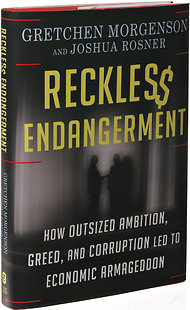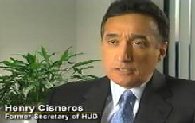But mortgage defaults are not yet poised to deflate home prices, as is the case in some other parts of the state, a real estate information firm reported Monday. Statewide, the number of default notices sent to homeowners hit its highest level in almost 10 years.
In the nine Bay Area counties, 6,730 homeowners received "notices of default" from their lenders in the January-to-March period, according to DataQuick Information Systems. That's 160 percent more than during the same time last year. But it is slightly less than the peak level, which was reached in first quarter 1996, when 6,830 owners received such notices.
And when would the numbers indicate that the Bay Area is in trouble?
"If the economy weakens or there are labor market problems, then look at this to be a disconcerting number as it's rising," said Mark Schniepp, director of the California Economic Forecast, in Goleta.
The other risk factor is whether more and more borrowers who qualified for loans with subprime credit will default. "We don't know to what extent the subprime problem is really going to blow up," he said. "We don't think the economy is going to hell in a hand basket, so that's going to help save us."
DataQuick analyst John Karevoll also said the rising numbers are "not a factor yet" in tugging down overall Bay Area home prices, though prices in neighborhoods with numerous foreclosures may be affected. "Nothing like it is, and will continue to be, say, out in the Central Valley." A total of 11,054 homeowners in the 16-county Central Valley region - spanning from Kern to Yuba counties - received notices of default last quarter, up 166 percent from a year earlier. The statewide rise in default notices is "the result of flat appreciation, slow sales, and post-teaser-rate mortgage resets," the DataQuick report said. Some borrowers are finding themselves unable to afford their monthly payments once their initial, low interest rate begins to adjust upward. Lenders filed 46,760 notices of default statewide last quarter, up 23 percent from the previous quarter and up 148 percent from a year earlier. Last quarter's total was the highest since 47,912 such notices were filed in the second quarter of 1997. The notices are the first step in the foreclosure process and are typically sent to homeowners a few months after they stop making payments. About 40 percent of those who received default notices last year in the Bay Area were foreclosed upon. The previous year, only about 8 percent were foreclosed upon. Defaults and foreclosures were at record lows a couple of years ago largely because when prices were rising, most homeowners who found themselves unable to keep up with their mortgage payments could sell their homes for more than they owed on their loans, pay off their lenders, and avoid the foreclosure. But now that home values have flattened in most places and fallen in some, it's more difficult to do that - especially for owners who bought their homes fairly recently and have experienced scant equity gains. Homeowners are most likely to go into default in the first year to 18 months after purchasing their homes. Most of the loans that defaulted in first quarter 2007 were originated between April 2005 and May 2006, Karevoll said. In Santa Clara County, 1,058 homeowners received default notices in the first quarter, slightly more than double the 527 who got them in first quarter 2006. Default activity peaked in the county in the third quarter of 1992, when 1,510 homeowners received notices from their lenders. Karevoll said the level of defaults and foreclosures in the Bay Area is still too low to be a factor in driving down housing prices regionwide. In the Central Valley and in Southern California's Inland Empire, however, there are enough foreclosures that any sign of recession could pose a big problem for housing prices there, he said. "Santa Clara is in very good shape. It's got about half the problem as in the state," he said. "It's a problem if you're the person involved - you know, that's terrible. But as a market problem, a problem that will start to put downward pressure on prices, we're nowhere near that level in the Bay Area." On a loan-by-loan basis, mortgages statewide were least likely to go into default in Marin, San Francisco, San Mateo and Santa Clara counties, the DataQuick data showed. In Contra Costa County, however, defaults rose to a record 1,969 in the quarter, up 226 percent from a year earlier. Sacramento and San Diego also hit new quarterly records, at 3,234 and 3,931 defaulting homeowners, respectively. The counties in which loans were most likely to be in default were Sacramento, Riverside and San Joaquin counties. Homeowners who received default notices were a median five months behind in their payments when the lender began the foreclosure. The borrowers were behind by a median $10,784 on a median mortgage of $331,200. Separately on Monday, Foreclosures.com, a company based near Sacramento that teaches clients how to buy properties in foreclosure, said that 253,803 notices of default and notices of pending foreclosure auction filings were sent to homeowners nationwide, up 23 percent from the final quarter of 2006.
Contact Sue McAllister at smcallister@ mercurynews.com or (408) 920-5833.





